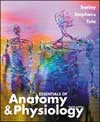 |
1 |  | 
With innate immunity, |
|  | A) | each time the body is exposed to a substance, the response is the same. |
|  | B) | specificity and memory are involved. |
|  | C) | we can become immune to a disease. |
|  | D) | antibodies may be produced. |
|  | E) | all of these |
 |
 |
2 |  | 
Lymphatic tissue |
|  | A) | contains many lymphocytes. |
|  | B) | filters blood or lymph. |
|  | C) | contains fine reticular fibers. |
|  | D) | is found in the spleen, tonsils, and lymph nodes. |
|  | E) | all of these |
 |
 |
3 |  | 
The ____________ are usually referred to as "the tonsils." |
|  | A) | lingual tonsil |
|  | B) | laryngeal tonsils |
|  | C) | palatine tonsils |
|  | D) | pharyngeal tonsil |
|  | E) | thymal tonsils |
 |
 |
4 |  | 
Lymph nodes |
|  | A) | have one afferent and many efferent vessels. |
|  | B) | have germinal centers where lymphocytes divide. |
|  | C) | filter the blood. |
|  | D) | are found only in the lower limbs. |
|  | E) | pump lymph toward the heart. |
 |
 |
5 |  | 
In the spleen, |
|  | A) | white pulp is associated with veins. |
|  | B) | red pulp is associated with arteries. |
|  | C) | mainly lymph is filtered. |
|  | D) | there are many lymph sinuses. |
|  | E) | worn-out erythrocytes are destroyed. |
 |
 |
6 |  | 
Which of these chemical mediators does NOT promote inflammation? |
|  | A) | complement |
|  | B) | histamines |
|  | C) | leukotrienes |
|  | D) | lysozyme |
|  | E) | prostaglandins |
 |
 |
7 |  | 
Complement |
|  | A) | is a group of about 100 proteins found in plasma. |
|  | B) | circulates in the blood in an inactive form. |
|  | C) | becomes activated by contact with erythrocytes. |
|  | D) | is produced from lymph. |
|  | E) | is only effective against viruses. |
 |
 |
8 |  | 
The most important phagocytes are |
|  | A) | lymphocytes and basophils. |
|  | B) | basophils and mast cells. |
|  | C) | neutrophils and basophils. |
|  | D) | neutrophils and macrophages. |
|  | E) | macrophages and lymphocytes. |
 |
 |
9 |  | 
Dust cells, microglia, and Kuppfer cells are examples of |
|  | A) | basophils. |
|  | B) | eosinophils. |
|  | C) | lymphocytes. |
|  | D) | macrophages. |
|  | E) | neutrophils. |
 |
 |
10 |  | 
Natural killer cells |
|  | A) | are a type of macrophage. |
|  | B) | exhibit no memory response. |
|  | C) | recognize cells infected by a specific virus. |
|  | D) | are produced in the thymus. |
|  | E) | all of these |
 |
 |
11 |  | 
Which of these is an example of a self-antigen? |
|  | A) | bacterial antigen |
|  | B) | viral antigen |
|  | C) | pollen antigen |
|  | D) | food antigen |
|  | E) | tumor antigen |
 |
 |
12 |  | 
Given these events that are part of helper T cell activation: 1.interleukin-1 released by macrophage (costimulation) 2. antigen processed by macrophage 3. helper T cell binds to macrophage 4. helper T cell releases interleukin-2 and divides 5. antigen displayed on MHC molecule, Arrange the events in the order that they occur as an antigen is recognized and a helper T cell is activated. |
|  | A) | 1,4,2,5,3 |
|  | B) | 2,5,3,1,4, |
|  | C) | 3,1,4,2,5 |
|  | D) | 4,2,5,3,1 |
|  | E) | 5,3,1,4,2 |
 |
 |
13 |  | 
B cells |
|  | A) | are stimulated by helper T cells. |
|  | B) | are produced in the thymus. |
|  | C) | release cytokines. |
|  | D) | cause cell lysis. |
|  | E) | all of these |
 |
 |
14 |  | 
Antibodies |
|  | A) | are glycolipids. |
|  | B) | have a constant region that binds to antigens. |
|  | C) | are produced by plasma cells. |
|  | D) | are produced in cell-mediated immunity. |
|  | E) | are most effective against microorganisms that live inside cells. |
 |
 |
15 |  | 
Antiserum is used to produce |
|  | A) | active natural immunity. |
|  | B) | active artificial immunity. |
|  | C) | passive natural immunity. |
|  | D) | passive artificial immunity. |
 |



 2002 McGraw-Hill Higher Education
2002 McGraw-Hill Higher Education